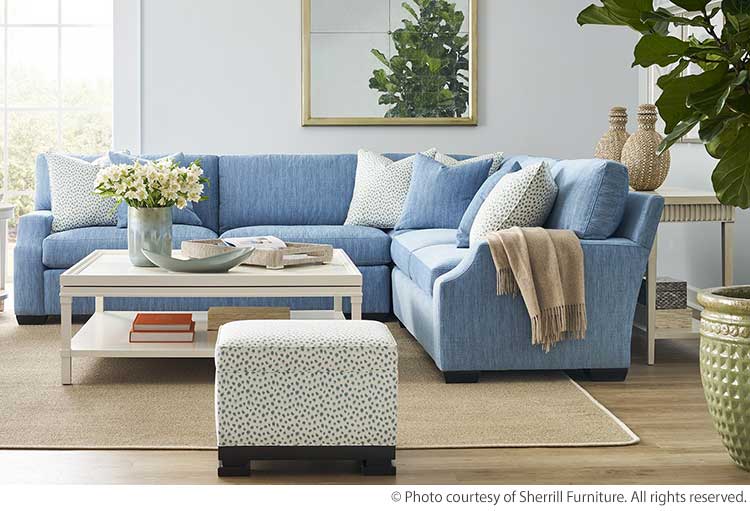Where to Buy Furniture
Last updated November 2024

At some furniture stores, well-informed helpful staffers make shopping pleasant and guide you to good choices. They quote accurate delivery time frames, and your stuff arrives as promised and as expected. But subscribers send us many, many complaints about abysmal furniture-shopping experiences—think unhelpful sales staff, mammoth delivery delays, and damaged merchandise. Some stores compound consumer woes by refusing to make things right or establishing unreasonable return policies.
A lot can go wrong. Fortunately, you can avoid common pitfalls.
Check What Past Customers Say
We gathered ratings of furniture stores by surveying consumers (primarily Consumers’ Checkbook subscribers but also other randomly selected consumers we invited to submit ratings). Our Ratings Tables report results for companies that received at least 10 ratings.
At stores rated highly for “advice,” expect helpful interior design suggestions plus prompt full answers to questions without excessive sales pressure. Stores with high ratings for “ease of looking at/testing products” should have well-designed showrooms, too.
Our Ratings Tables also show customer survey ratings on “reliability” (standing behind products, doing what was promised, etc.) and “promptness”—two aspects of quality possibly related to serious inconvenience or other problems. Some stores were rated “superior” for “reliability” by 80 percent or more of their surveyed customers, but others received “superior” ratings from fewer than half of surveyed customers.
Check on What They Sell
Before venturing to a store, make sure it sells what you like by looking at its website or social media posts.

Check the Warranties and Guarantees You Get
Many consumers complain about damaged or defective furnishings. Some flaws are immediately apparent—scratched tables, poorly matched upholstery, improperly shaped cushions. Others, like fading upholstery or badly glued chair legs, materialize only over time.
Except for makers of recliners, sofa beds, and other items with mechanical parts, furniture manufacturers seldom offer direct-to-consumer warranties. Although manufacturers often offer or imply promises, or warranties, to their authorized retailers, these aren’t usually in writing. That means stores are supposed to inspect items and arrange repairs. Getting repairs done locally is quickest and easiest, but some items have to be returned to the factory.
When furniture stores go out of business—a regular occurrence—more responsible manufacturers usually back their products, possibly arranging for another retailer or independent repair shop to make fixes. If your retailer is still in business but unresponsive, the manufacturer might pressure it or help you.
Most retailers offer their own standard warranty, but ask to get it in writing. This will mean the store is responsible for replacing or repairing defective stuff, even if it can’t recover costs from the manufacturer.
To minimize problems—
- Inspect furniture upon delivery. If it is defective, reject it. But if the defect is minor, you may be better off calling the store to discuss it. Note the defect on the delivery slip; and then—with store approval—keep the item until a replacement arrives.
- If you discover a defect after delivery, notify the retailer immediately. The longer you delay, the more likely they’ll accuse you of causing the damage.
- Complain to the retailer in writing. If they’re slow to respond, you’ll have a record of how long you’ve been trying.
- If a piece is defective but usable, and your retailer agrees to let you keep it until a new piece arrives, make sure the store agrees in writing to provide a replacement.
- Pay by credit card. The federal Fair Credit Billing Act provides important protections for customers who are delivered faulty or defective goods.
Check How Soon They Can Deliver
A delivery delay is another common gripe about furniture buying. Delays are usually due to special orders, but sometimes production schedules or long shipping times for imported goods add to the holdup. With custom upholstered furniture, you’ll wait both for the piece to be made and for the fabric to come from the textile manufacturer.
If you special-order a piece that’s expected in three months, but the wait turns out to be twice that, you want to know as soon as possible—not when the item doesn’t arrive on time. To avoid this, ask your retailer to include the following promises on your sales slip or email confirmation:
- Order promptly and request a delivery date from the manufacturer.
- Notify customer if the date quoted by the manufacturer is later than the store’s estimated delivery date.
Although store promises won’t assure good service, a few other things will help. First, make as small a down payment as possible. Some retailers expect full payment for special orders; most expect partial payment (usually 20 to 50 percent). The less you pay up front, the more eager the retailer will be to complete the transaction.
If you haven’t heard from the retailer three or four weeks after ordering, call and ask whether the manufacturer’s acknowledgment has come in and if the initial estimated delivery date is still valid.

Check Return Policies
If a retailer promises that you’ll be able to return an item, get that in writing.
Even if the store and manufacturer do their parts, you may still dislike your new furniture. Some retailers might take back your custom 14-foot-long purple paisley velvet sofa to sell, but most won’t. For items purchased from current stock, returns should be simple, but many retailers will not accept returns even of regularly stocked furniture in original condition.
Keep in mind that you may be able to return furniture only for a few days or weeks. Also, some stores offer only store credit; others charge restocking fees.
Check the Payment Options
Some stores are more flexible than others on payment. Almost all take credit cards; some offer their own charge accounts (open-end, revolving credit). Both arrangements offer flexibility on timing your payments and, under the Fair Credit Billing Act, in many cases allow you to refuse payment for unsatisfactory or undelivered merchandise. Other stores have buy now, pay later financing, offer installment loans, or promote terms under which interest is not calculated for a certain period or payments are delayed. Unfortunately, after these promo periods, store financing often comes with very high interest rates.


